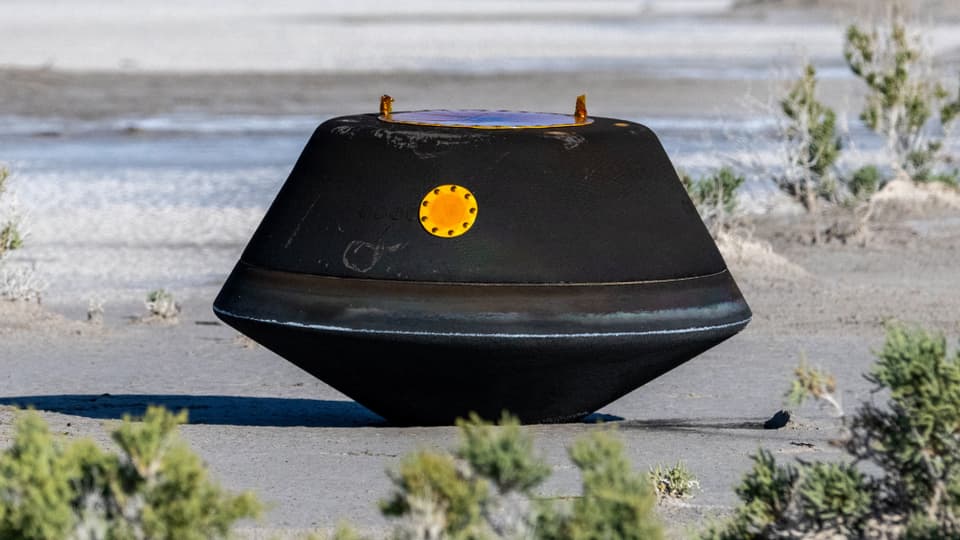- A sample of asteroid Bennu’s debris, collected by NASA’s Osiris-Rex probe and falling above Earth, has landed in the US state of Utah.
- The capsule containing the sample landed in the desert, protected by a heat shield and slowed down by parachutes, as live images from the US space agency NASA showed.
- “Congratulations! “You did it,” Bill Nelson, head of NASA, congratulated his employees. “The impossible has become possible.”
NASA scientists at the control center reacted with applause and cheers when the capsule, which weighs about 46 kilograms and has a diameter of about 81 centimeters, landed on Earth three minutes before scheduled time. Osiris-Rex dropped the capsule, which resembles a salad bowl with a raised lid, a few hours ago at an altitude of about 102,000 kilometers above the Earth.

legend:
This is the first sample of asteroid rocks that NASA successfully returned to Earth.
Reuters/NASA/Keegan Barber
According to NASA estimates, the capsule contains about 250 grams of debris collected from the celestial body about three years ago. Helicopters brought the capsule, which according to NASA’s initial assessments was undamaged upon arrival, to a sterile laboratory near the landing site. It will then be transported to NASA laboratories in Texas, where about 200 scientists will work on the sample using 60 different examination methods.
The probe has been moving since 2016
If the capsule’s contents turn up as NASA hopes, it will be the first asteroid sample successfully brought to Earth in NASA’s history — and perhaps the largest such sample ever taken. In 2005, the Japanese space probe Hayabusa landed on an asteroid. In 2010, the first soil samples collected from this celestial body were brought to Earth. There have been other flights to asteroids, but no other probe has been able to return material to Earth yet.
Osiris Rex (origins, Spectral Interpretation, Resource Identification, Security-Regolith Explorer) was launched from Cape Canaveral Spaceport in September 2016 and arrived on Bennu about two years later. In October 2020, the probe took a sample of the asteroid in a complex maneuver that lasted several hours – the first American rocket in the history of space.
A defect in sample collection
The probe temporarily left its place in Bennu’s orbit and approached it a few meters away. Using what looked like a robotic arm, it touched the asteroid’s surface for about five seconds and expelled pressurized nitrogen to stir up the sample material, which was then sucked up.
There was also a mishap: the lid of the collection container was opened slightly by larger stones, allowing parts of the sample to escape. NASA scientists still assume there is enough material in the collection container.
The “Osiris-Rex” probe, which is approximately six meters long and weighs 2,100 kilograms, set off towards the next asteroid Apophis immediately after it was shot down. According to calculations, the asteroid with a diameter of about 370 meters will pass near Earth at a distance of about 32 thousand kilometers in 2029, and thus it can be studied closely for the first time. The mission has already been extended for at least nine years – and now it has a new name: “Osiris Apex.”


